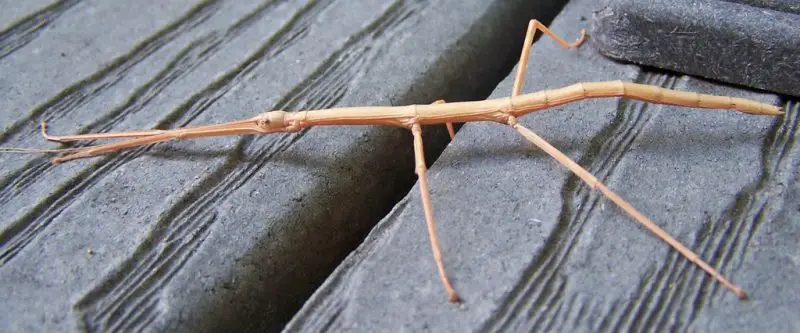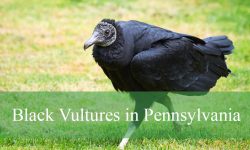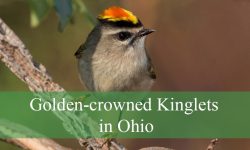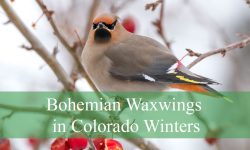Walking sticks move through North Carolina’s forests with such quiet subtlety that most people never notice them at all. Their elongated bodies, branch-like shapes, and slow, deliberate movements allow them to disappear into the foliage as if they are part of the forest itself. Yet behind their camouflage lies a fascinating world filled with surprising behaviors, seasonal rhythms, and survival strategies perfectly designed for the landscapes of the Southeast.
North Carolina offers walking sticks an ideal blend of temperate forests, humid summers, and dense understory vegetation. These habitats support countless insects, but walking sticks remain among the most mysterious. Their ability to mimic twigs is so effective that entire populations may exist in a woodland without anyone realizing they are there.
This article uncover the hidden truths behind these remarkable insects, exploring how they blend into the environment, how they reproduce, how they avoid predators, and how they support North Carolina’s forest ecosystems.
Understanding Walking Sticks in North Carolina

What Walking Sticks Really Are
Walking sticks, or stick insects, belong to an insect order known for extreme camouflage and slow, tree-bound lifestyles. Their bodies resemble twigs so closely that even experienced naturalists can miss them if they cling to a branch and remain perfectly still. Their coloration varies from pale green to dark brown, matching the forests of the Piedmont, Coastal Plain, and Appalachian foothills.
Despite their delicate appearance, walking sticks are well adapted to North Carolina’s climate. They feed primarily on deciduous leaves, using mandibles strong enough to cut through tough vegetation. Their gentle movements and plant-matching shapes form their primary defense. By avoiding sudden activity, they rely almost entirely on invisibility to stay alive.
Walking sticks are also more social than many people expect. Though not gregarious in the traditional sense, they often feed in loose groups, especially in areas with abundant vegetation. Their distribution can be uneven, with dense clusters appearing in healthy hardwood forests where foliage is plentiful.
Why North Carolina Forests Support Them So Well
North Carolina’s forests provide a perfect combination of climate, plant diversity, and shelter. Humid summers support lush growth of oaks, maples, hollies, sweetgums, and other leaf-rich species. These plants offer abundant food and dense foliage where walking sticks can hide from predators.
In the Coastal Plain, shrub thickets and young pine stands remain moist for much of the year, providing additional habitat for juvenile walking sticks. The Piedmont’s mixed hardwood forests create canopy cover and leaf layers where adults blend into branches almost invisibly. In the Appalachians, cooler temperatures combine with rich understory vegetation, offering ideal oviposition habitats.
North Carolina also has long growing seasons that give walking sticks extended feeding and breeding windows. The mild climate allows eggs to overwinter safely in forest soil, ensuring strong annual population cycles.
Where They Occur Across the State
Walking sticks appear in nearly every region of North Carolina, but some areas support especially high numbers.
Coastal Plain and Sandhills
Shrublands, pine forests, and seasonal wetlands hold excellent walking stick populations. Thick vegetation provides abundant food and cover.
Piedmont Hardwood Forests
Mixed oak, maple, hickory, and sweetgum forests create prime habitats. Walking sticks cling to branches, stems, and leafy twigs where they remain perfectly hidden.
Mountain Foothills
Moist ravines and sheltered slopes allow strong egg survival. Adults often occupy understory layers where humidity stays consistent.
Their presence shifts throughout the year. Spring brings newly hatched nymphs climbing vegetation. Summer offers the highest visibility as individuals become larger. Autumn sees adults dropping eggs into leaf litter. Winter hides the next generation underground until warmer conditions return.
Hidden Behaviors Most People Never Notice
Their Camouflage Is an Active Strategy
Walking sticks do not rely solely on stillness. They mimic twigs through posture, angle, and micro-movements. When wind blows branches, walking sticks sway gently to match the motion. This controlled swaying makes them virtually undetectable to predators.
When threatened, some species drop to the forest floor and remain motionless for long periods, disappearing among dead leaves. In North Carolina’s forests, this behavior helps them avoid birds, lizards, and small mammals that may otherwise detect motion.
They Have Unique Defense Behaviors
Beyond camouflage, walking sticks use chemical defenses. Some species release a mild deterrent from glands near their thorax. Though harmless to humans, this spray can discourage predators such as ants or small mammals. Their long legs allow them to reposition quickly on branches, though they avoid fast movement unless absolutely necessary.
Certain walking sticks also regrow lost legs. This regeneration helps them survive predator encounters and continue climbing despite injuries.
They Blend Their Activity With Forest Rhythms
Walking sticks are primarily nocturnal. They move more actively after sunset, feeding and searching for mates when visual predators cannot detect them as easily. During the day, they freeze in place, often clinging to twigs at angles that perfectly match the branches around them.
North Carolina’s twilight and early evening humidity support their movement by preventing dehydration. In drier conditions, walking sticks reduce activity to conserve moisture.
Anatomy Built for Forest Camouflage
Bodies Shaped for Invisibility
Walking sticks possess one of the most advanced camouflage adaptations in the insect world. Their elongated, cylindrical bodies mirror the exact proportions of twigs, stems, and slender branches that dominate North Carolina’s forests. When resting, they extend their legs straight alongside the body, tightening their silhouette until they appear indistinguishable from a small stick caught on a branch. This alignment hides their joints, reduces visible shadows, and breaks up their outline—crucial elements for remaining unnoticed in both bright sunlight and shaded understory environments.
Their coloration varies widely depending on species, age, and habitat. Some individuals display rough, bark-like browns with subtle ridges that mimic tree texture. Others take on smoother green tones that match fresh spring growth or the softer shoots of understory shrubs. This color variation gives them flexibility across diverse habitats, from the emerald thickets of the Coastal Plain to the darker, oak-heavy forests of the Piedmont.
In North Carolina, where forest structure shifts dramatically between regions, walking sticks use their body shape to remain virtually invisible year-round. Their goal is not to flee predators, but to disappear entirely.
Legs Designed for Vertical Climbing
Each walking stick has six exceptionally long, slender legs that function like precision climbing instruments. Their legs grip stems, leaves, and tiny branch surfaces with remarkable steadiness. At the tip of every leg is a small, clawed foot capable of hooking onto smooth bark or rough twigs, allowing them to climb vertically for long distances without slipping.
Despite their fragile appearance, walking sticks are surprisingly stable. Their lightweight bodies distribute their weight across narrow surfaces, enabling them to navigate wind-shaken branches without falling. Even when branches sway dramatically in summer storms, walking sticks counterbalance with gentle shifts in leg placement, maintaining a firm hold using minimal energy.
These legs also help them freeze instantly when threatened. A walking stick that stops mid-step becomes indistinguishable from a twig, making their climbing anatomy inseparable from their camouflage strategy.
Eyes That Detect Slight Movement
Walking sticks do not rely on sharp vision for survival. Their eyes are adapted instead for detecting motion—an essential trait for an insect that depends on stillness. Their compound eyes perceive changes in light and movement around them, allowing them to sense predators such as birds approaching from above.
This sensitivity to motion also guides their characteristic swaying behavior. When a breeze moves surrounding branches, walking sticks replicate the same gentle motion to avoid standing out. By matching the forest’s rhythm, they reinforce an illusion so believable that predators often overlook them even at close range.
Feeding Habits Across North Carolina Forests
Diet of Deciduous Leaves
Walking sticks feed on a diverse array of forest leaves. In North Carolina’s hardwood habitats, they commonly consume oak, sassafras, sweetgum, black cherry, blackberry, hickory, and witch hazel foliage. Their chewing mouthparts make clean, rounded cuts along the leaf edges, leaving behind patterns that appear subtle compared to the more ragged bites of caterpillars.
They are slow but persistent feeders. A single individual may stay on the same branch for hours, moving only slightly as it consumes foliage. This steady feeding rarely harms the plant, and walking sticks seldom strip branches completely.
Nocturnal Feeding Patterns
Walking sticks are most active after sunset, emerging from their resting positions to feed when birds are no longer patrolling the forest. Nighttime humidity also helps prevent dehydration, which is especially important during North Carolina’s warm summers.
During the day, they remain motionless on branches. Their stillness conserves energy and reduces the chance of being spotted by predators such as jays, cuckoos, or nuthatches.
Seasonal Diet Shifts
Young nymphs, newly hatched in spring, require softer leaves that are easier to digest. They congregate on the tender growth of shrubs and low tree branches. As walking sticks mature, their mandibles strengthen, allowing them to consume tougher, thicker foliage found deeper in the canopy.
This seasonal shift mirrors North Carolina’s leaf cycle. Leaves are soft and pale early in the year, maturing into firmer, darker structures by midsummer.
Reproduction and Life Cycle in North Carolina
Eggs Dropped Into Leaf Litter
Walking sticks use a simple but highly effective reproductive strategy. Females release eggs individually or in small clusters onto the ground. These eggs fall into leaf litter, where they blend seamlessly with seeds, bark fragments, and forest debris. Their seed-like appearance protects them from predators and prevents ants from carrying them away.
The forest floor maintains stable moisture and temperature levels, acting as a natural incubator throughout the winter.
Slow Development and Spring Emergence
Eggs remain dormant during cold months. When temperatures rise in spring, tiny nymphs emerge from the soil and immediately climb vegetation to begin feeding. This early life stage is incredibly vulnerable. Camouflage determines survival, as predators can easily locate moving nymphs before they reach the safety of leafy cover.
These nymphs resemble miniature versions of adults, though their coloration may shift as they grow.
Gradual Growth Through Molting
Walking sticks grow through a series of molts, shedding their outer skin each time they increase in size. Molting requires the insect to hang upside down from a leaf or branch while the old exoskeleton splits open. Once free, the new exoskeleton hardens, and the insect resumes feeding.
By late summer, most individuals have reached full adult size and begin looking for mates. Adults live only a few months, but the next generation survives through winter in egg form.
Walking Sticks Across North Carolina Landscapes
Coastal Forests and Thickets
The Coastal Plain supports some of the state’s highest walking stick densities. Shrub thickets, pine understory, and low hardwood branches offer ideal feeding and hiding sites. Constant humidity helps nymphs grow steadily through summer.
Piedmont Suburban Woodlots
Many homeowners encounter walking sticks in backyards surrounded by hardwood trees. They occasionally climb home walls, porch rails, or screening materials during nighttime feeding or dispersal.
These suburban pockets can support surprisingly strong populations due to mixed tree species and shaded understory.
Appalachian Hardwoods
Mountain forests maintain cool, moist conditions that reduce desiccation risk for both eggs and adults. Walking sticks are common in ravines, cove forests, and sheltered slopes where vegetation is rich and diverse.
Seasonal Rhythms in North Carolina
Spring
Eggs hatch as temperatures rise. Nymphs spread through young foliage, feeding on soft, early-season leaves.
Summer
This is the peak growth season. Adults are largest and most active during warm nights when humidity is high.
Autumn
Adults mate and females begin dropping eggs. As temperatures cool, adults gradually become less active.
Winter
Eggs overwinter in leaf litter, remaining insulated beneath layers of forest debris.
Interaction With Other Wildlife
Birds
Cuckoos, jays, and woodpeckers occasionally prey on walking sticks, especially when individuals move or fall from branches.
Mammals
Small mammals such as mice or shrews may disturb eggs while foraging, indirectly influencing future walking stick populations.
Insects
Praying mantises, assassin bugs, and large spiders sometimes prey on nymphs or adults, particularly during molting when their bodies are soft.
Myths and Misconceptions
Walking Sticks Are Rare
Walking sticks are common but nearly invisible due to exceptional camouflage.
They Harm Trees
Their feeding is minimal and poses no real threat to forest health.
They Are Dangerous
Walking sticks do not bite humans, carry venom, or harm pets.
Ecological Importance
Supporting Forest Health
Their feeding helps cycle nutrients by encouraging leaf turnover, contributing subtly to decomposition processes.
Prey for Forest Predators
Walking sticks play a role in food webs, supporting birds, spiders, and small mammals.
Indicators of Habitat Quality
Healthy walking stick populations signal strong forest structure, diverse plant communities, and stable moisture levels.
FAQs About Walking Sticks in North Carolina
Are walking sticks common in North Carolina?
Yes. They occur statewide but are rarely seen due to excellent camouflage.
What do walking sticks eat?
Mainly deciduous leaves from oaks, maples, sweetgum, and understory shrubs.
When are they most active?
Mostly at night, especially in summer.
Do they bite or sting?
No. They are harmless to humans.
How do they survive winter?
Eggs remain dormant in leaf litter until spring.
Where can I find walking sticks?
Look on shrubs and low branches in hardwood forests, especially late summer.






